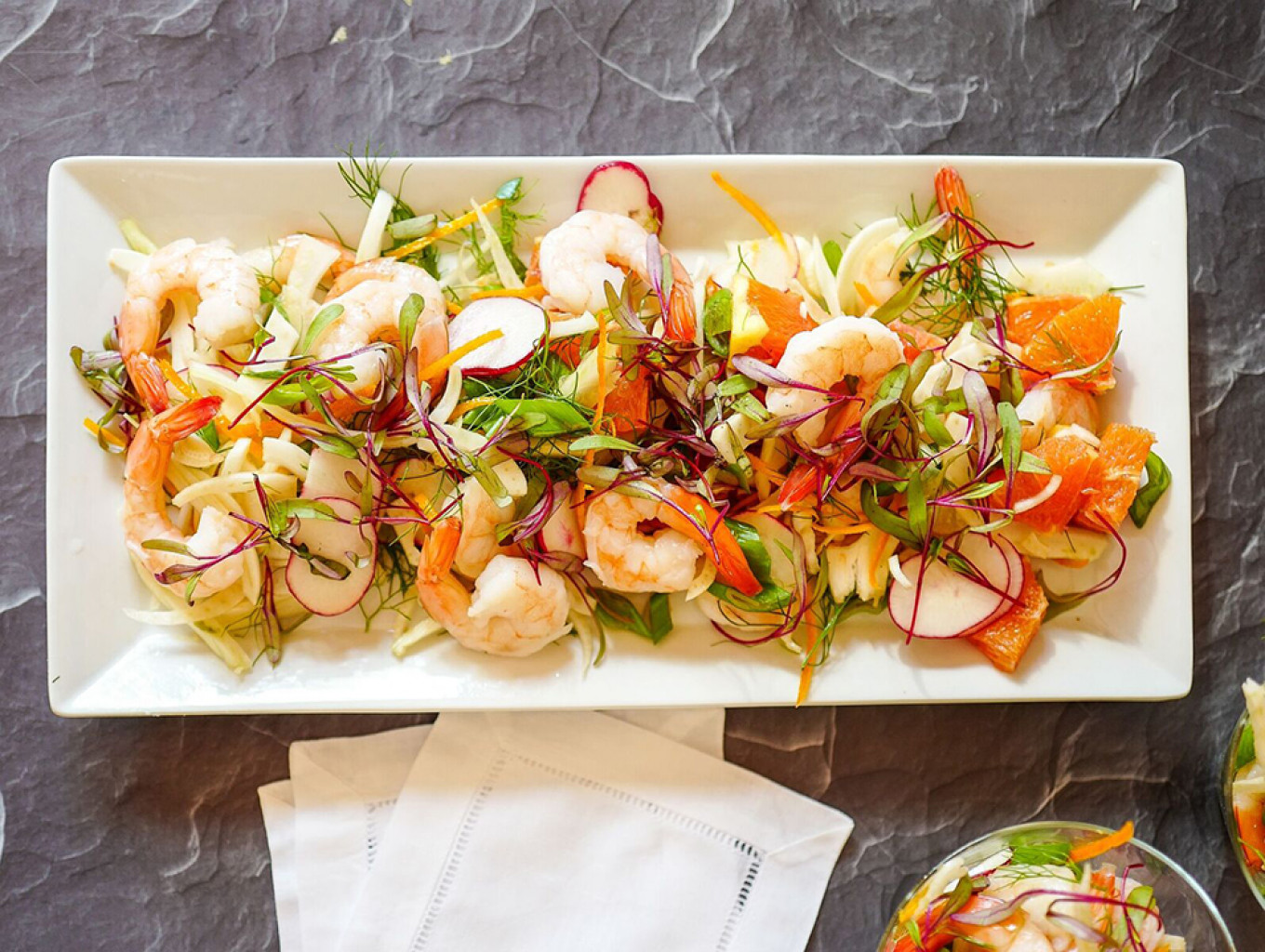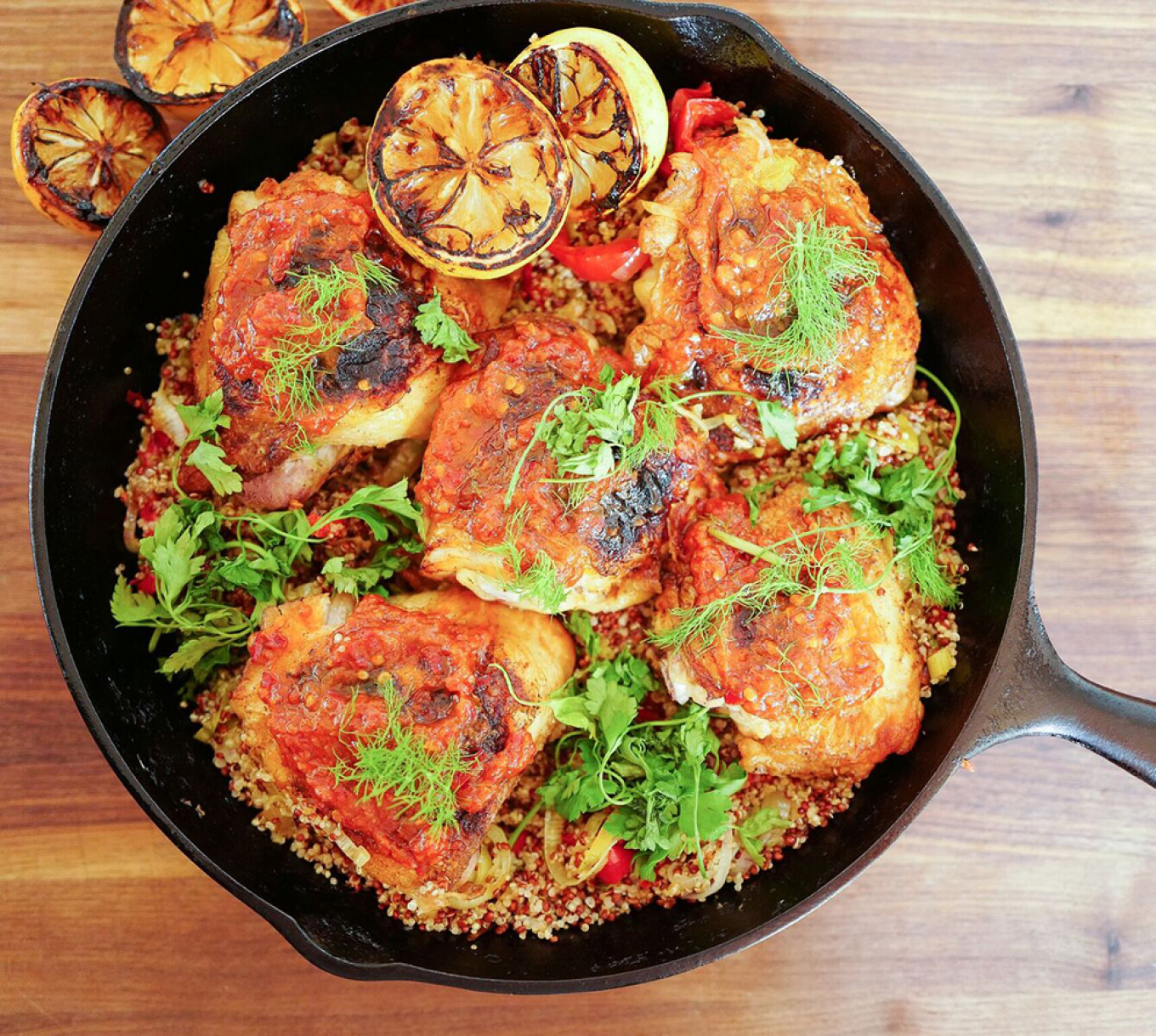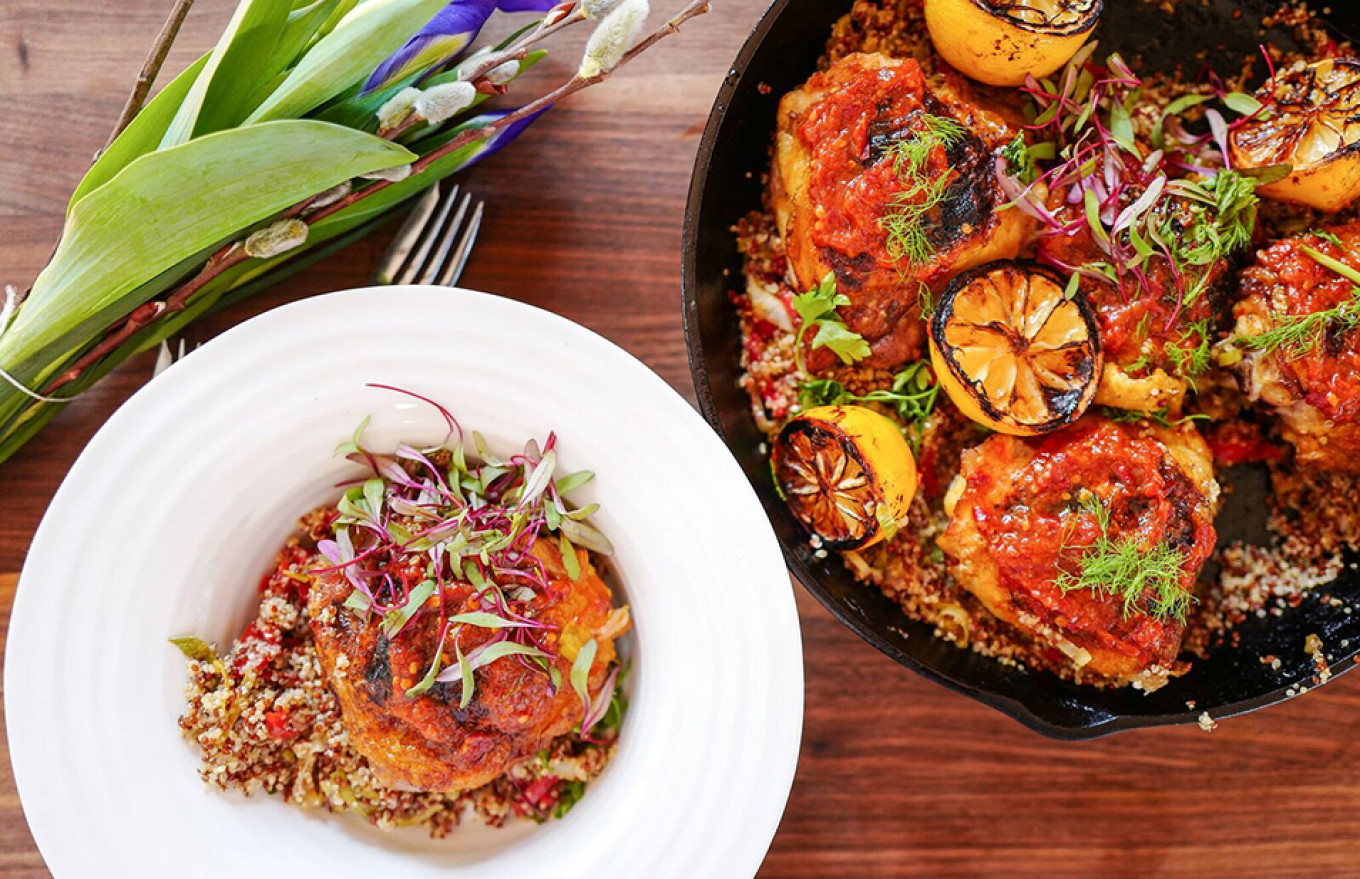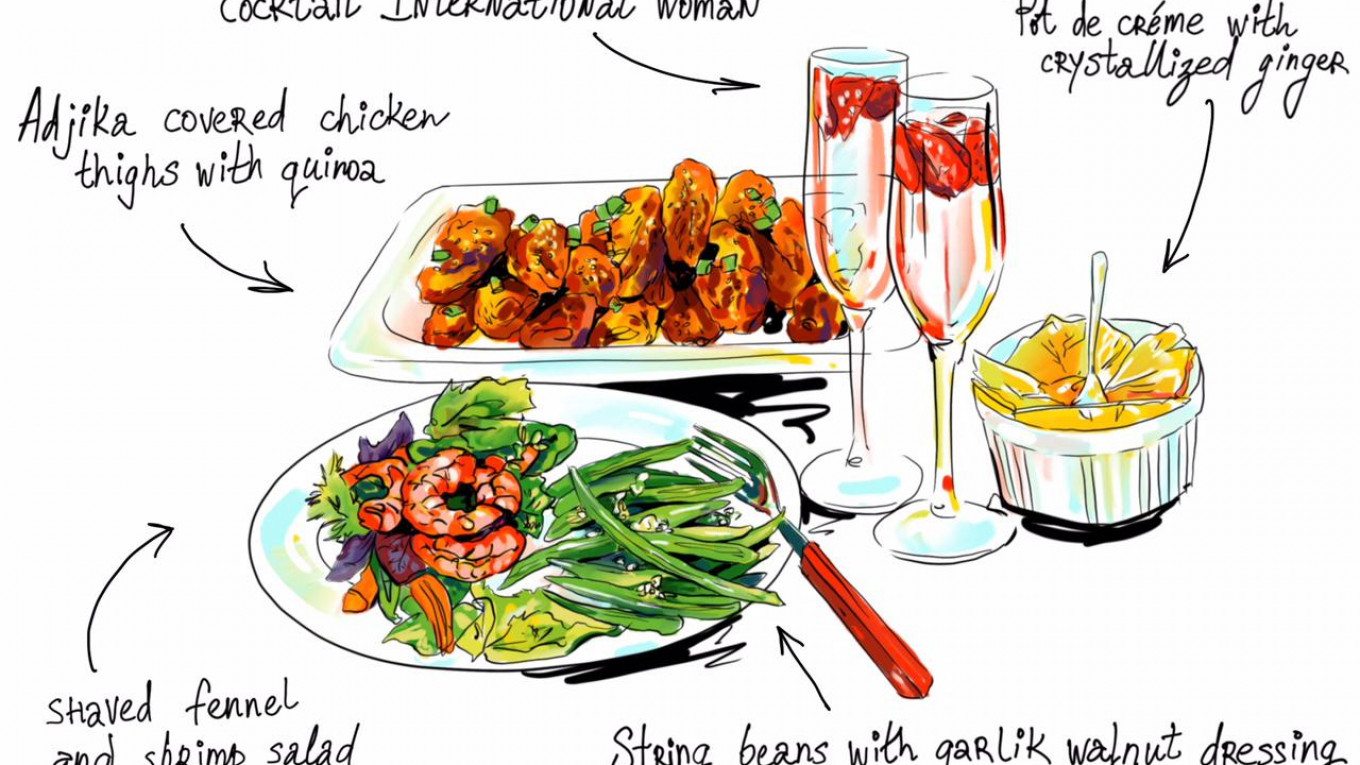An American friend has invited me to a real live Women’s March on March 8; the kind with placards and earnest hashtags. I was very flattered, and seriously considered going but ultimately had to send my regrets.
“I’m so sorry,” I said. “But I’ll be busy that day.”
“Doing what?” asked my friend, who can be forgiven for wondering if there is anything more pressing than standing up for women and their empowerment.
“Being waited on hand and foot by my husband,” I confessed, feeling not a little chagrined.
“Really?” she asked with just a hint of sarcasm in her voice.
“Oh yes,” I said, “this is a once a year thing, and I’m not missing a minute of it.”
My friend was deeply puzzled.
“It’s a Russian thing,” I said, a phrase, which these days seem to serve as a blanket excuse for almost anything.
The Changing Face of International Women’s Day
Any red-blooded Russian Alpha Male will tell you, they invented International Women’s Day. And like so many things (the radio, the fighter jet, etc.) this is kinda sorta true, but not completely.

International Women’s Day was first celebrated in the United States in 1909 to honor the 1908 garment workers’ strike in New York City. Championed by the Socialist International, Women’s Day was established as an annual event the following year, though no fixed date was established for the actual day, making it challenging to celebrate globally. But the dogged international women kept plugging away, and the following year on March 19, 1911, the day was marked by protests, demonstrations, and rallies in Austria, Germany, Switzerland, and Denmark. Emphasis then was on women’s right to vote, right to work, to hold public office and calls for an end to economic discrimination on the job.
Russians came to the party in 1913, using International Women’s Day to stage demonstrations not only in support of women’s rights but also in support of the demand for liberal reform in the autocratic Russian Empire. In 1914, calls for peace were added to the general agenda.

International Women’s Day Revolutionized
It was 1917, however that really put International Women’s Day and Russia squarely on the map. A thaw in the weather on the last Sunday in February — March 8th by the Gregorian calendar still used in Imperial Russia — brought factory workers out in the streets of Petrograd in droves to support International Women’s Day. Three long years of privation and wartime hardship put “Peace and Bread” at the top of the women’s demands. The demonstration swelled with Petrograd garrison troops joining the marchers, signaling the final loss of control of the Russian capital by the Romanov Tsars in what would come to be known as the “February Revolution.”
International Women’s Day, Domesticated
From the fiery spirit of those pioneers for equality and justice who ushered in a century of great progress for women’s rights, we somehow have got here. Today in Russia International Women’s Day is all about the big present, the champagne, possibly some naughty lingerie, maybe a weekend to Paris, and, if all of these fail, the classic trope of the clueless Russian man donning his wife’s apron, taking up her pots, pans, and brooms and doing her work on this one day of the year.
So what happened?
Perhaps it was the loss of so many men in World War II that condemned two generations of Soviet women to the multiplicity of roles: bringing home the bacon and having to fry it up for dinner and wash the dishes afterwards. Perhaps it was the Soviet yearning for glamour and romance that permeated the stagnant Brezhnev years, or the conspicuous consumption mania that characterized the post-perestroika era. Maybe it was an insidious conspiracy by Lancome and Tattinger. It’s a mystery, and yet: Here we are.
Or rather, here you are, Alpha Male Russian. I’ll have my feet up while HRH bumbles about the kitchen trying to find things like salt and coffee. Later we’ll go out because I always remind him to make reservations way ahead of time, which you need to do if you have any hope of getting a table anywhere slightly nicer than Teremok.
If you haven’t made reservations, then your best bet is to get in the kitchen and come up with a meal that tells your International Woman just how much you revere and appreciate everything she does for you the other 364 days a year. Makaroni po Flotski — that classic army dish of ground meat on pasta — isn’t going to cut it today. Your average Russian woman today is not only international, she’s also sophisticated. She’s into hot yoga and exotic travel; she drinks green juice while she curates her Instagram (or is that curates the green juice on her Instagram?); and she loves a good artisanal cocktail with muddled fruit or edible flowers. It’s time to get your A game on, Alpha Male.
Don’t worry. We’ve got you covered.
The Signature Cocktail: Start With a Sweet Fizz
International Women’s Day is a sign that spring is definitely on the way! She may be acting a bit coy and hard to get by delaying her arrival a bit, but the bright sprays of mimosa on sale at every metro station tells you that she cannot be far off.
A signature cocktail should reflect that happy meteorological state of affairs. To my way of thinking, there is nothing like the taste of elderflower to herald the arrival of spring, nor the fizz of champagne to indicate we have much to celebrate. This is a sweet cocktail that can be made with either gin or vodka and has enough fresh botanicals and French fizz to get your International Woman in the right frame of mind for the feast to come!
The International Woman Cocktail
Ingredients:
- 2 oz (60 ml) lemon vodka or Tanqueray Rangpur gin
- 1 oz (30 ml) fresh lime juice
- 1 oz (30 ml) elderflower liqueur
- 2-3 strawberries tossed with 2 tsp of sugar
- 3 oz (90 ml) champagne (ideally pink)
Instructions:
- Slice the strawberries into quarters, then toss them with the sugar. Place all but one strawberry into the bottom of a wine glass and muddle (crush) with the stick end of a wooden spoon.
- Combine the vodka or gin, the elderflower liqueur, and the lime juice in a cocktail shaker filled half way with ice cubes. Shake vigorously for about a minute.
- Decant the vodka mixture on top of the muddled strawberries. Top up with the champagne. Garnish with the remaining strawberry.

Shaved Fennel and Shrimp Salad
This starter is #Instafab — it tastes as good as it photographs, even with #nofilter. Fresh ingredients are a must so hit your favorite farmers’ market for some lovely aromatic fennel and crisp radishes. Feel free to tinker with the ingredients: starfruit would be nice here, as would very thinly sliced baby carrots. Use a food processor or a mandoline to make the slices as thin as possible, but do watch your fingers!
Ingredients:
- 2 whole oranges
- 1 lb (500 grams) cooked shrimp, peeled and deveined.
- 1 fennel bulb with fronds
- ½ pound (200 grams) fresh radishes
- 1 handful colorful sprouts such as pea orbeet shoots
- 3 Tbsp good quality olive oil
- 2 Tbsp f Malden salt flakes
- Fresh pepper
- ¼ cup (60 ml) cilantro, chopped fine
- ¼ cup (60 ml) fresh mint, chopped fine
- Optional: 1 finely sliced Serrano chilipepper (if you want a bit more heat)
Instructions:
- Remove the zest from one orange and set it aside. Use a sharp knife to remove all of the white pith, then slice the orange into 2 cm chunks. Place these with the zest.
- Slice the remaining orange in half and place it flesh side down on a skillet on medium heat. Let cook until the orange begins to leech its liquid. Check that the flesh is now slightly charred. Set both halves aside.
- Use a mandoline or a food processor fitted with a steel cutter to slice the fennel and radishes as finely as you can. Toss the slices with one Tbsp of Malden Salt and set aside.
- Just before you are ready to serve, squeeze the charred oranges into a small container. Add the salt and whisk to combine. Then slowly pour the olive oil into the mixture, whisking continuously.

Adjika Glazed Chicken Thighs with Quinoa
Chances are your International Women loves the flavors of Georgia (I’ve yet to meet anyone who doesn’t). These chicken thighs, adapted from a midweek “Basically” recipe from the good folks at Bon Appetit, gives you the flavors of that magnificent cuisine without the hassle of foil-wrapped bricks or open flames. I was a little dubious about beginning the thighs in a cold pan when I first tried this, but it renders a ton of delectable golden schmaltz that gets you correspondingly crispy skin. Presented in an attractive manner, this is sure to both please and impress your International Woman. Bonus brownie points for using quinoa (pronounced keen-wah.) She didn’t even dream you knew about healthy grains.
You’ll find it in the pantry next to the couscous and the buckwheat.
Ingredients:
- 6 bone-in chicken thighs with skin
- 1 Tbsp ground mild or sweet red pepper
- 1 Tbsp sumac
- 2 Tbsp sea salt
- 1 Tbsp ground coriander
- 2 Tbsp Adjika Sauce (you can substitute harissa)
- 3 medium sized leeks, sliced very fine and thoroughly cleaned
- 1 large red pepper, cut into thin matchsticks
- 4 cloves garlic, crushed and coarsely chopped
- 1 cup (240 ml) quinoa + 1 ¾ cups (415ml) of water
- 3 Tbsp olive oil
- 4 whole lemons, sliced in half
- Chopped parsley and tarragon to garnish
Instructions:
- Four to six hours (or better still, the night before) before cooking, combine the sweet red pepper, sumac, sea salt, and coriander in small bowl. Rub the mixture into the skin of the chicken thighs. Chill, uncovered in the fridge. Remove the chicken from the fridge 45 minutes before cooking to let it come to room temperature.
- Preheat the oven to 325ºF (165ºC).
- Slice the lemons in half, then set them flesh side down in a small skillet over medium heat for roughly 20 minutes. When the juice begins to run, check the underside for signs of charring (black streaks). Set lemon halves aside.
- In a small saucepan, combine the quinoa and water and bring to a boil. Reduce heat to a slow simmer and cook, covered for 10-15 additional minutes until the moisture has been completely absorbed. Squeeze one of the charred lemon halves over the quinoa and add the olive oil. Toss to combine. Set aside.
- Pat the chicken thighs dry with a paper towel, then set them skin side down in a cold, oven-proof skillet large enough to hold them all. Turn on the heat to medium-high and let them be until the fat begins to render. Resist the temptation to sneak a peek underneath: this will pull the skin from the thigh before it is completely cooked. Cook for about 14-15 minutes, then remove the thighs to a plate, tent with tin foil and set aside.
- Decant all but 1 Tbsp of the accumulated fat into a non-reactive, heat-resistant jar. Stir in the adjika, then squeeze two of the lemon halves into the jar. Whisk gently to combine and set aside.
- Set the skillet back on medium heat, then add the leeks with a generous pinch of salt. Sauté them until they become slightly limp. Then add the garlic and red pepper. Toss gently to combine.
- Nestle the chicken thighs on top of the leek and pepper mixture and cook in the preheated oven for an additional 15-18 minutes. Test for doneness by slicing into one of the chicken thighs.
- Remove the thighs to a serving platter, then place the skillet back on the burner over low heat. Add the quinoa to the leek and peppers, gently reheating the mixture. Spoon the quinoa mixture around the chicken thighs, then drizzle the adjika/lemon sauce over them. Serve with the remaining charred lemons, cut into quarters and garnish with chopped tarragon and cilantro.
String Beans with Garlic Walnut Dressing
This simple side dish is another nod down south to Georgia where no serious table is set without a dish of beans. For a quick and easy side dish to compliment the heat of the chicken, here are string beans tossed with dried sour cherries and dressed in a pungent walnut dressing.
Choose thin French-style“haricot verts” if you can find them.
Ingredients:
- 1 lb (500 ml) fresh string beans, topped and tailed
- 1 cup (240 ml) shelled walnuts
- 3 cloves garlic, finely minced
- 4 Tbsp olive oil
- 2 Tbsp Balsamic vinegar
- 1 Tbsp fresh orange juice
- 1 Tbsp honey
- 1 Tbsp sea salt
- Fresh ground pepper
- ½ cup (125 ml) dried sour cherries orcurrants
- 1 Tbsp freshly grated orange zest
- 1 tsp sumac
Instructions:
- Preheat the oven to 400ºF (205ºC).
- Line a baking sheet with parchment paper,then spread the shelled walnuts evenly. Roast in the oven for about 10 minutes, checking frequently to ensure that the walnuts don’t scorch. Toss half way through to cook evenly.
- Place the walnuts in a blender or food processor fitted with a steel blade and pulse 6-7 times to crush the walnuts. Remove half of the walnuts and set aside. Add the orange juice, vinegar, honey, salt and garlic to the portion of walnuts remaining in the blender and pulse to combine (4-5 times).
- Remove the mixture to a small glass bowl. Whisking the walnut mixture gently with a fork, add the olive oil in a steady stream until combined.
- Bring a saucepan of water to a rolling boil. While it is coming to a boil, prepare an ice bath in a wide mixing bowl filled with ice water and a spritz of lemon juice. Plunge the string beans into the boiling water and leave them there for approximately 1 minute. Drain through a colander then immediately plunge the string beans into the ice bath.
- When you are ready to serve, take the walnuts that were not used for the dressing and roughly chop them into 1 cm pieces.
- Drain the string beans and pat them dry with paper towel. Toss the string beans with the orange walnut dressing and the sour cherries until well combined. Don’t drown the string beans in the mixture, they should be lightly coated, not swimming init.
- Arrange the string beans on a serving platter, then garnish with the orange zest and walnuts. Scatter the chopped walnuts around the string beans then sprinkle the sumac on top. Serve immediately.

Amaretto Ginger Pots de Crème with Fresh Berries
If you’ve got this far, Alpha Male Reader,my congratulations. I hope you took some pictures! (If you did, tag me on your Instagram, I’d love to see them!)
Your International Woman is already deeply impressed with your signature cocktail, your #instafab salad and your culinary trip to Georgia. Well done! You are almost at the finish line, the wind is at your back and you are pretty much unstoppable.
It’s time to clear the table, refill your International Woman’s glass and whip out the piece de resistance: ginger pots de crème!
Pot de crème is French for “pot of cream,” a lovely French dessert that is a little too loose to be a custard or a crème brûlée, and so is served in a little pot of its own, making it absolutely adorable. You’ll need four small ovenproof containers such as a ramekin. While pots de crème are traditionally made with vanilla, we’re going to make ours with ginger and crushed amaretto cookies, then serve it with a charming medley of fresh berries. This is an easy one to do ahead and there is nothing scary about it.
Really. Also very #instafab.
Ingredients:
- A 5-cm long piece of fresh ginger, peeled and sliced into thin “coins”
- ¼ cup (60 ml) Amaretto
- 2 cups (475 ml) 10% cream or half and half
- 1 cup (240 ml) heavy cream
- ¾ cup (175 ml) sugar
- ½ tsp of salt
- 8 egg yolks
- 1 tsp of vanilla extract
- ¼ cup (60 ml) candied ginger, chopped
- 4 Amaretto cookies such as Lazzaroni Amaretti Di Saronno (the one in thered tin), crushed
- 2 cups (475 ml) of fresh berries
Instructions:
- Bring a medium-sized saucepan of water to a rolling boil. Plunge the ginger coins into the water and let simmer for 1 minute. Strain and place the ginger back into the saucepan and add the cream(s), half of the sugar, the salt, and the vanilla extract. Place the saucepan on the stove and heat over medium-low heat, stirring to dissolve the sugar. When the mixture is just about to boil, remove it from the burner and set aside to steep for 30 minutes.
- Preheat the oven to 300ºF (150ºC) and place the rack in the middle of the oven.
- Whisk together the yolks and half of the sugar in a non-reactive bowl until the color of the yolks appears a few shades paler than it was. When the ginger and cream mixture has steeped, pour it into the egg yolk mixture, gently whisking to combine.
- Boil a kettle full of water
- Strain the mixture through a fine mesh sieve, then discard the ginger pieces.
- Place the ramekins in a rectangular cake or roasting pan that is large enough to hold them all. Divide the mixture evenly between the ramekins. Pour the boiling water into the pan to about half of the height of the ramekins. Bake for 30-40 minutes until the custard is firm but still slightly wobbly.
- Carefully remove the ramekins from their bath water and let them cool to room temperature on a rack. Top them with the crystallized ginger. Refrigerate, covered with tin foil for at least 3 hours before serving so that the custard with completely set. Pots de crème may be made up to two days in advance.
- Serve with fresh berries.
Jennifer Eremeeva is a longtime expat who writes about food, cuisine, history and culture at jennifereremeeva.com. Follow her on Twitter @JWEremeeva and Instagram @jennifereremeeva.
A Message from The Moscow Times:
Dear readers,
We are facing unprecedented challenges. Russia's Prosecutor General's Office has designated The Moscow Times as an "undesirable" organization, criminalizing our work and putting our staff at risk of prosecution. This follows our earlier unjust labeling as a "foreign agent."
These actions are direct attempts to silence independent journalism in Russia. The authorities claim our work "discredits the decisions of the Russian leadership." We see things differently: we strive to provide accurate, unbiased reporting on Russia.
We, the journalists of The Moscow Times, refuse to be silenced. But to continue our work, we need your help.
Your support, no matter how small, makes a world of difference. If you can, please support us monthly starting from just $2. It's quick to set up, and every contribution makes a significant impact.
By supporting The Moscow Times, you're defending open, independent journalism in the face of repression. Thank you for standing with us.
Remind me later.







